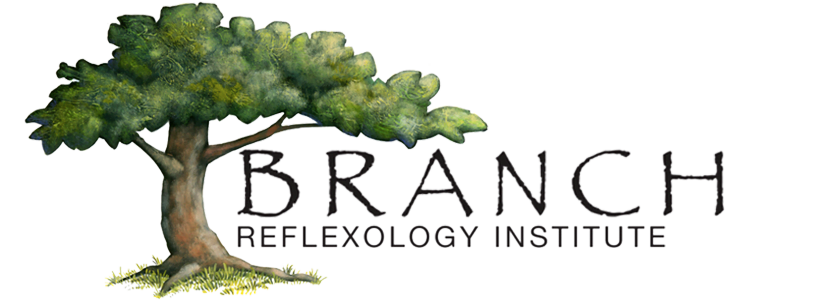ARCB Definition:
Foot and hand reflexology is a scientific art based on the premise that there are zones and reflex areas in the feet and hand which correspond to all body parts. These techniques are applied to reflex maps resembling the human body, which are believed to exist on the feet and hands
Reflexology: Caring for the Body by Tending to the Feet
Unlike shoes we are only given one pair of feet in our lifetime. The same feet that walk us miles in a day also talk to us. Our feet can tell us many things about our health. Through the use of an age-old science called Foot Reflexology, I would like to explore with you how your two feet relate reflexively to your entire body and your health.
Feet are a grounding source of our energy, they connect us with the earth, yet our awareness of them is often literally the furthest thing from our minds. After reading this article you may approach your feet with an appreciation and understanding of their integrated relationship to your whole body.
Reflexology Origins
The origins of reflexology can be traced back to about 2330 B.C. In 1913, Dr. William FitzGerald, M.D., rediscovered zone therapy. He found that pressure on certain reflex points helped corresponding body organs function more normally and also to decrease pain. This practice has come to be known as reflexology, an approach to holistic health that many people have adapted over the years.
How Does It Work?
There are several theories about how reflexology works. One point of view says that each of the 7,200 nerve endings in the feet connects to a different area of the body. By direct pressure on specific areas of the foot, we send a stimulation to the corresponding body area. Dr. FitzGerald’s zone theory divides the body into ten zones – five on each side of the body—with each zone having its own nerve-stimulation pattern, so that when pressure is applied to a reflex point on that zone, a stimulation is sent to a corresponding organ or gland.
There are channels of energy coursing through the body; each important organ and muscle is connected by a network of nerves to a tiny point on the foot where the energy terminates. As circulation in the feet slows down—through illness, wearing shoes, or lack of exercise—crystalline deposits form at the nerve endings. By working a deep-compression foot technique, the deposits are broken up, encouraging the whole body to keep perking along at peak efficiency.
We are all subject to a certain amount of stress, tension, and worry which may cause imbalances within our energy system and lead to symptoms associated with colds, flu, or headaches. We commonly find that specific reflex points are congested and painful during these times, and frequently they feel as if there are gains of sand under the skin. The grains are made up mostly of uric acid or calcium crystals, which can form when our bodies are out of balance. These crystals may cause blockages around nerve endings in the feet and decrease normal stimulation of glands and organs.
By using deep compression in the form of a caterpillar crawl, a reflexologist is able to crush or disperse the crystals around these nerve endings so they can be reabsorbed by the blood and lymph system and excreted from the body. Reflexology can assist the body by relaxing it and stimulating blocked nerve endings, which has the effect of stimulating sluggish glands and organs to regain their normal functioning.
We are all familiar with the effects of sand in a garden hose and how several small grains of sand can obstruct the normal flow of water. Let’s clear the path for our human energy system to function at it’s highest potential.
Here are 5 of the most commonly asked questions regarding Foot Reflexology.
1. In simple terms what does Reflexology do?
- Relieves tension
- Increases nerve and blood supply
- Allows the body to normalize or balance
2. Who can benefit from Reflexology?
Everyone! A person does not have to have something wrong in order to benefit from reflexology. Not only is it a way to relax the body, it is a way to release blockages that are causing tension in one’s emotional-physical energy system.
3. When will I feel the effects of the treatment?
Many people experience relief during the session itself and most people feel positive changes immediately following the session.
4. How long does a session last?
The first session will take a little longer for the Reflexologist to seek out all areas of congestion. After the initial visit, you can generally plan on a one hour appointment, 25 minutes on each foot with time incorporated for a soothing foot soak.
5. Does it hurt?
No. Reflexology is profoundly relaxing. Your comfort during the session is essential for maximum blood flow to all parts of the body. When we are tense, blood flow constricts. Think of a session in terms of an internal stimulation of all your organs and glands.
Used regularly, reflexology can help to give your body a general toning in order to enhance vitality and increase your sense of well-being. If you have never paid attention to your feet, reflexology can open the door to developing a new understanding of how our feet can tell us where we are carrying tension in our body.
